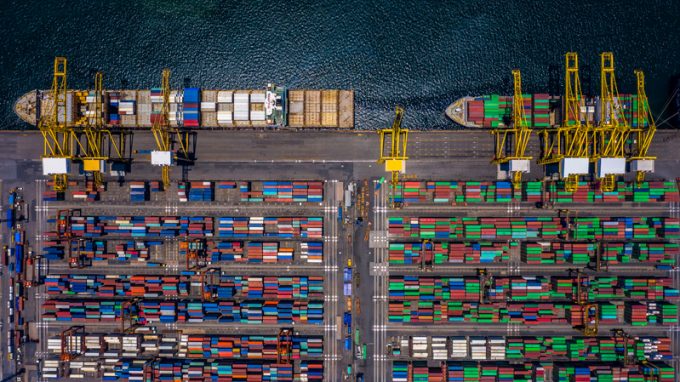East-west rates diverge as transpac spots hold while Asia-Europe keeps falling
Container spot freight rates on the main east-west trades diverged this week after a series ...

Container freight rates have yet to see any significant erosion, despite the coronavirus pandemic’s stranglehold on demand.
But the aggressive blanking programmes of carriers is disguising the real picture, according to Bimco’s chief shipping analyst, Peter Sand.
Indeed, for spot rates the SCFI cumulative index is still some 10% higher than 12 months ago, while its longer-term CCFI contract component is 9% higher.
The analyst said the blanking, combined with slower steaming and diverting ships around the Cape of Good Hope, was “artificially ...
'Disastrous' DSV-Schenker merger would 'disrupt European haulage market'
'Chaos after chaos' coming from de minimis changes and more tariffs
List of blanked transpac sailings grows as trade war heats up and demand cools
Shippers in Asia restart ocean shipment bookings – but not from China
India withdraws access for Bangladesh transhipments, in 'very harmful' decision
'Tariff hell' leaves industries in limbo – 'not a great environment to plan'
Asian exporters scramble for ships and boxes to beat 90-day tariff pause
Temporary tariff relief brings on early transpacific peak season
Pre-tariff rush of goods from US to China sees air rates soar, but not for long
De minimis-induced ecommerce demand slump could cripple freighter operators
Forwarders 'allowing the fox into the chicken run' by supporting 'hungry' carriers
Hapag 'took the bigger risk' when it signed up to Gemini, says Maersk
'Restoring America's maritime dominance' – stop laughing at the back of the class
Navigating tariffs: 'like trying to solve a Rubik's cube while colour-blind'
Marginal gains on east-west ocean container routes in a challenging week

Comment on this article